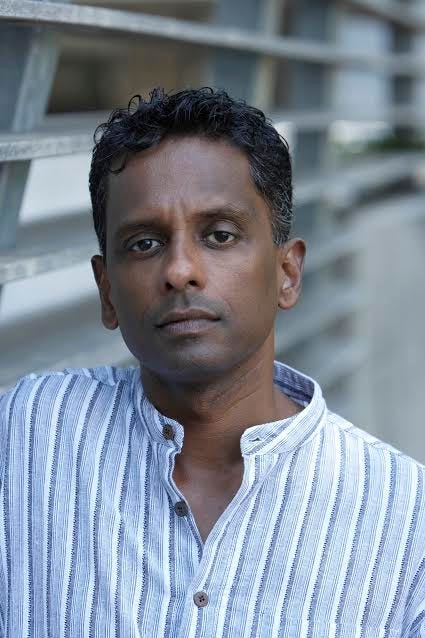
There remains a great sense of loneliness for the individual, even if there is an outward and open sense of pride being shown on the part of the larger LGBTQ community. We’re making progress, but we aren’t.
***
Gay men have been suffering for more than a century in the western literary canon. Functioning as a composite of coming-out stories, AIDS narratives, and dramas detailing the struggle of integrating with and fighting against social norms, the body of work identified as “gay literature” provides a detailed history of modern homosexuality. Creating this valuable historical record for future generations to reflect on, writers like Edmund White, Christopher Isherwood and Andrew Holleran have been telling these kinds of stories for decades.
While it’s important that these stories are told, a younger generation of gay readers and writers seem to recognize that it’s time for a change. What we’re beginning to see is a body of literature that represents a more diverse community in terms of age, race, and even economic status. With the publication of books like Hanya Yanagihara’s A Little Life, Alexander Chee’s Edinburgh, Garth Greenwell’s What Belongs to You, and Drew Nellins Smith’s Arcade — just to name a few — we’re beginning to see a steady cast of characters who are no longer struggling to find their place in the societies that had rejected their ancestors.
What these new characters are struggling with, instead, is convincing themselves that they belong in the worlds they inhabit. With the existing tradition of coming-out stories and AIDS narratives serving as the foundation for this new gay literature, these younger authors seem to be more interested in exposing the personal, emotional trauma that haunts the gay community today, as opposed to examining the narrative of the societal outcast.
These characters aren’t looking for acceptance from their friends, family or communities, as they seem to already have this support. Instead, they’re choosing to tell stories about the loneliness, shame, and remnants of the past that are haunting younger generations of gay men. The central tension that these newer novels keep returning to is the conceit that although it’s easier to come out today (as opposed to say the 1940s or 1950s when writers like Gore Vidal and James Baldwin were sharing their experiences), there remains a great sense of loneliness for the individual, even if there is an outward and open sense of pride being shown on the part of the larger LGBTQ community. We’re making progress, but we aren’t.
[We have ] our own neighborhoods, bars and clubs, vacation resorts, political leaders, street marches, scholarly study, university classes… the list goes on. This all makes it sound like we’re living in a rainbow themed utopia, doesn’t it?
Since the mid to late 2000s, American culture has been rapidly changing, growing ever more inclusive for a variety of minority groups. Through the power of social media, important legal battles at the state and federal level are now being broadcast and discussed garnering high-profile political attention and bringing to light issues of violence that previously went unnoticed. With the legalization of gay marriage (and our current administration’s threat to take it away) as well as issues regarding the rights of transgender people, LGBTQ communities have been at the forefront of American consciousness for several years now. It would be wrong to say that none of this has had an impact on contemporary literature, because it most certainly has. The question then becomes, how much change is needed in order to counteract the negative aspects of the past, that lingering history which in many ways defines what it means to be gay in the United States.
While this kind of representation is important for younger generations to see — a reassurance of the LGBTQ community’s presence and what that represents for our generation moving forward — this level of exposure doesn’t come without a cost.
With more LGBTQ characters in television, film, music and sports, popular culture seems to be changing American culture for the better. Moonlight won best picture and now when there’s a gay character on a TV show, their homosexuality is no longer the punchline. Shows like ABC’s The Real O’Neals are a huge step forward as we’re seeing characters like Kenny O’Neal — played by openly gay actor, Noah Galvin — who shows the compatibility of homosexuality and religion, something not seen nearly often enough in LGBTQ media. The gays have got Sam Smith, Troye Sivan and Olly Alexander playing on the radio, athletes like Gus Kenworthy and Tom Daley taking home Olympic medals, and YouTubers like Connor Franta and Tyler Oakley advocating for LGBTQ equality and rights. The gays now have cable channels, iPhone apps, our own neighborhoods, bars and clubs, vacation resorts, political leaders, street marches, scholarly study, university classes… the list goes on. This all makes it sound like we’re living in a rainbow themed utopia, doesn’t it? While this kind of representation is important for younger generations to see — a reassurance of the LGBTQ community’s presence and what that represents for our generation moving forward — this level of exposure doesn’t come without a cost.
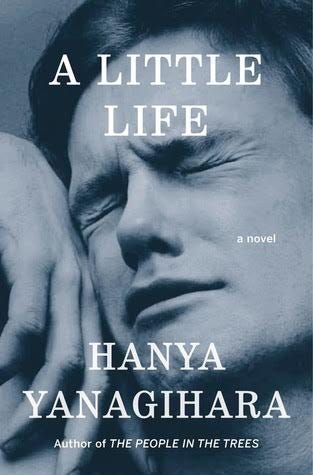
In his article, “The Epidemic of Gay Loneliness,” Michael Hobbes writes, “In our lifetime, the gay community has made more progress on legal and social acceptance than any other demographic group in history,” and he’s not wrong, although he does qualify this claim. Hobbes continues, “still, even as we celebrate the scale and speed of this change, the rates of depression, loneliness and substance abuse in the gay community remain stuck in the same place they’ve been for decades.” Even in contemporary gay fiction, the protagonists can’t seem to evade the sense of gay shame and loneliness that pervaded nearly every work of gay literature published throughout the twentieth century. While it seems that the drive of this shame has shifted from an external source (gays aren’t accepted by society, and so must remain hidden) to an internal source (self-shaming), perhaps it’s simply a holdover from what has been presented before. In his book How to be Gay, scholar David Halperin argues a similar point. He writes, “Unlike the members of minority groups defined by race or ethnicity or religion, gay men cannot rely on their birth families to teach them about their history or their culture. They must discover their roots through contact with the larger society and the larger world” (7). Contemporary authors grew up with the LGBTQ literature written in the latter half of the twentieth century, and it seems they have managed to internalize the homophobia and shame that characterized much of what came before, so much so that with these early novels serving as models for the literature being published today, gay shame almost feels as if it has become a fundamental element of gay literature. The question that needs to be addressed, then, is what turns a literary novel into a “gay novel.” Can we even label contemporary novels as “gay fiction” if they don’t deal with this shame? Is simply having a gay character in the novel enough to make it a “gay novel,” or does homosexuality need to be what drives the plot forward? This quickly becomes unclear.
[A Little Life] was the first book I had possibly ever read in which a majority of the characters in the novel are on some part of the LGBTQ spectrum without the author needing to remind us every few pages or spend time reducing them to tropes.
Upon its publication in 2015, Garth Greenwell called A Little Life “The Great Gay Novel,” and he raises some valid points in his argument. He writes, “the complexity of the characters’ relationships to sexual identity is one way Yanagihara elevates them from mere ‘window dressing,’ and I suspect it’s one reason A Little Life hasn’t been recognized as a book fundamentally about gay male experience.” A Little Life tells the story of four friends — Jude, Willem, J.B., and Malcolm — living in New York after college. It details their individual struggles with personal identity and finding happiness, but also is about their struggle to remain friends when the nature of time threatens to tear them apart. Jude, the tragic hero, quickly becomes the center of the novel, the mysterious binding element in this group of four.
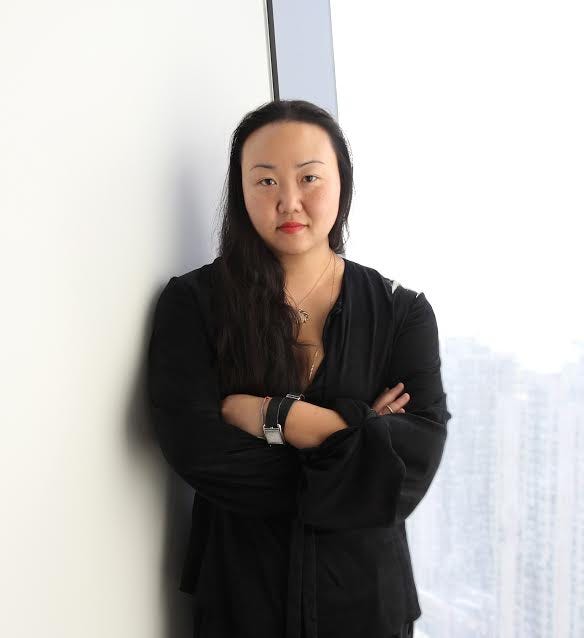
When I first read the novel, I kept waiting for Jude to have his revelatory experience, for him to come out to all of his friends and overcome his struggles. I was quite frankly a little disappointed when that didn’t happen. After Yanagihara’s slow reveal of Jude’s traumatic childhood, and early adulthood (okay, really his whole life), he struggles to connect with anyone, even his closest friend Willem. When I arrived at the last pages and finished the novel (sobbing), it finally hit me. A Little Life is incredibly gay, not because Jude needed to come out or because he stands up to society — he couldn’t even stand up to himself — but because this was the first book I had possibly ever read in which a majority of the characters in the novel are on some part of the LGBTQ spectrum without the author needing to remind us every few pages or spend time reducing them to tropes. Yanagihara simply allows Jude, J.B., Willem, and Malcolm to exist on the page, their sexualities, at times largely ambiguous, are simply another aspect of their identities. While Jude’s sexuality drives the plot forward in some small regard, the friendship of these four characters takes center-stage, and the line between friendship and relationship becomes incredibly difficult to define.
Issues of coming-out aren’t entirely absent, they’re simply, as stated before, more focused on internal conflict than external societal conflicts as were seen in novels like Giovanni’s Room (1956) by James Baldwin or Gore Vidal’s The City and the Pillar (1948), the protagonists of which face conclusions just as harrowing as those of contemporary characters.
In Garth Greenwell’s own novel, What Belongs to You (2016), he deals directly with issues of gay loneliness, a seeming representation of today’s hook-up culture, resulting from the introduction of Grindr and Tinder to younger generations of single gay (and straight!) men and women. Aside from a gay character’s isolation within their own world being something that most gay men can relate to, this novel was critically acclaimed, bringing the controversial topics of cruising and bathroom blowjobs to the attention of more conservative reviewers and audiences. If readers felt that What Belongs to You wasn’t explicit enough, however, Drew Nellins Smith more than makes up for it in Arcade (2016), a novel primarily set in a sex arcade in rural Texas. Here too, Smith’s narrator turns to cruising as a result of isolation and loneliness. Sexually transmitted diseases provide plenty of terror in both novels, but each book also tells the story of a character who is living on the margins of their society, not because they’ve nowhere else to go, but because they haven’t entirely accepted themselves for being who they are.
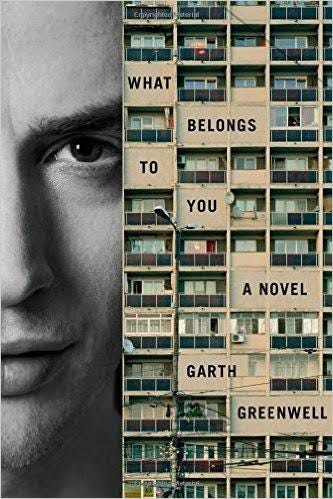
Greenwell’s unnamed narrator strives to connect with young hustler, Mitko, a truly flawed, mysterious character. He struggles to reconcile what he knows of Mitko’s past with his own ideas of what a relationship is supposed to look like, and is repeatedly left feeling unfulfilled. Time and again we see the narrator dealing with his own self-loathing, trust and commitment issues, and by the end, the reader feels almost as tired as the characters do. Likewise, Smith’s protagonist, Sam, is looking for love but in all the wrong places, his sense of shame permeating every page in the novel. Arcade may appear to be simply another narrative of gay loneliness, but Smith takes a darker, grittier, and much more sexual approach to understanding interpersonal communication in the gay community. Even here, issues of coming-out aren’t entirely absent, they’re simply, as stated before, more focused on internal conflict than external societal conflicts as were seen in novels like Giovanni’s Room (1956) by James Baldwin or Gore Vidal’s The City and the Pillar (1948), the protagonists of which face conclusions just as harrowing as those of contemporary characters.
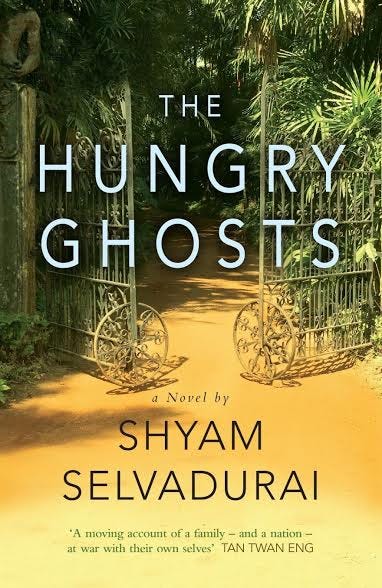
Equally as tragic as A Little Life, Selvadurai’s novel stands out as another narrative with complex characters who aren’t limited by their sexual identities.
Beyond American literature, these trends are easily identifiable, perhaps most clearly in the work of Sri Lankan born Canadian novelist, Shyam Selvadurai. The release of his most recent novel, The Hungry Ghosts (2013), marks Selvadurai’s fourth novel about a gay character struggling to reconcile identity and culture. Unlike his three earlier novels, however, a majority of this one takes place in Toronto as well as Sri Lanka. A much more mature and devastating novel than his prior efforts, The Hungry Ghosts marks a turning point in Selvadurai’s style. For as much as The Hungry Ghosts is a novel about being gay, it’s as much about the immigrant experience in Canada, and Selvadurai does a fantastic job of showing that the two experiences are strikingly similar. Overwhelmed by his memories of home and the mistakes he made in prior relationships, both familial and romantic, Selvadurai’s protagonist Shivan begins to doubt that redemption is even a possibility for him. We see Shivan come to terms with his sexual identity, and following in line with the other novels which have been discussed so far, Selvadurai only briefly allows Shivan moments of solace before they’re ripped away from him. Each time Shivan thinks he has found somewhere he can call home, his refusal to confront his past keeps him from finding comfort and happiness with others. Equally as tragic as A Little Life, Selvadurai’s novel stands out as another narrative with complex characters who aren’t limited by their sexual identities.
Novels like Arcade and Breathing Lessons don’t seem to shake this sense of shame, though, and in many ways, the contemporary gay novels available today are the same as the novels written in the 60s, 70s and 80s. These characters are no longer being inhibited by the cultures they live in, but still, they seem to establish limitations upon themselves.
Andy Sinclair’s 2015 novel, Breathing Lessons, is another fantastic example of Canadian fiction that is exploring these themes. A story centered on a man named Henry Moss, this short, explicit novel is entirely about gay loneliness and the drawbacks of hook-up culture and modern dating. Henry spends nearly every chapter of the novel with a different man, finding aspects of each sexual adventure that he enjoys, but none of them satisfying his longing for a meaningful monogamous relationship like the one he believes his brother Jeff has, envious of the family units created by his straight friends. Henry spends little time alone, he sleeps with married men, envious of whatever he thinks that they have, growing more and more apathetic with every hook-up. Eventually he returns home ashamed of himself for not being happy, even though he’s aware of the fact that he hasn’t had to suffer the kinds of abuse and trauma experienced by prior generations of gay men. Sinclair begs the question, if it’s so easy for Henry to be open about his sexuality and society accepts him for it, then why is it so hard to establish a meaningful relationship with another person? Much like Arcade, Breathing Lessons may be the ultimate summation of what it means to be a gay man in our modern, technological world, limited in many ways by apps like Grindr and Tinder, only being able to find other gay men through the internet or in bars and clubs, everything leading back to sex.
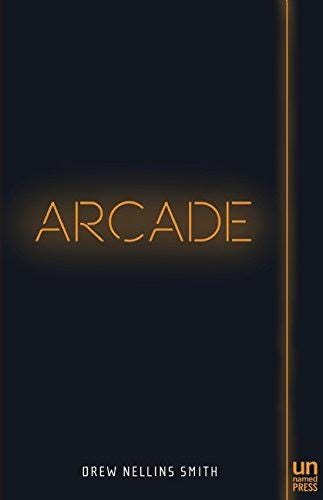
Novels like Arcade and Breathing Lessons don’t seem to shake this sense of shame, though, and in many ways, the contemporary gay novels available today are the same as the novels written in the 60s, 70s and 80s. These characters are no longer being inhibited by the cultures they live in, but still, they seem to establish limitations upon themselves. Remnants of the AIDS epidemic seem to holdover with contemporary authors as much of Arcade is consumed by this fear and paranoia of disease. Of course this is what authors like Drew Nellins Smith and Andy Sinclair grew up with, novels like Andrew Holleran’s Dancer from the Dance (1978), in which Holleran writes, “You know, I hate being gay…I just feel it’s ruined my life. It drains me, you know, it’s like having a tumor, or a parasite! If I were straight, I’d get married and that would be it. But being gay, I waste so much time imagining! I hate the lying to my family, and I know I’ll never be any of the things they expect of me…because it’s like having cancer but you can’t tell them, that’s what a secret vice is like” (51). Smith and Sinclair grew up with novels like this, teaching them how to be a gay man, being told that AIDS was the “gay disease” and only until recently, that equal rights in the eyes of the law were not guaranteed, nor should they be expected. It’s not surprising, then, that any awkwardness with other characters in these novels originates from flaws and inhibition on part of the protagonists. They are the ones holding themselves back, now, not society. Again, the source of this shame has shifted, but that shame is still present.

[These novels] show us that the world can be a difficult place for anyone to navigate, and that being homosexual doesn’t have to make this experience any more burdensome, but really it only changes who we decide to make that journey with.
We almost get past this feeling of shame with novels like Alexander Chee’s Edinburgh (2001), a story almost entirely about gay or questioning characters, but in the end, it’s not about being gay. It’s a novel about Korean heritage and what our upbringing can do to us as we grow older, how it can shape who we become. At the beginning of the novel, the protagonist, Fee, joins a choir group where he befriends many of the boys, and eventually ends up falling in love with his straight best friend, Peter. After they are sexually abused by their choir teacher, however, Peter ends up committing suicide, leaving a significant emptiness in Fee’s life. As we follow Fee throughout his early adulthood, Chee manages to tell his story about gay men and boys without it focusing on their sexuality. It is about love, more generally, and unrequited love in particular. The argument could be made, of course, that Edinburgh — much like A Little Life — is yet another novel about gay loneliness. What I would like to argue, however, is not that either of these novels are about gay loneliness, but are instead simply about lonely people. Like Garth Greenwell says, Yanagihara and Chee manage to move beyond “mere window dressing,” and they create fully formed characters who simply happen to fall in love with men as opposed to women. Jude from A Little Life could probably be read as asexual or non-binary, and there is a significant amount of evidence within the novel to support this claim, but even still, these two novels are sad without needing a gay qualifier. This, I believe, is because the source of their loneliness and struggle does not originate from their homosexuality. Both Fee and Jude seem to come to terms with their identities relatively quickly. Their anxieties, instead, originate with abuse, and so these novels stand apart from the rest of the bibliography discussed thus far. Chee and Yanagihara have created “gay novels” that break away from the traditional models. They show that the world can be a difficult place for anyone to navigate, and that being homosexual doesn’t have to make this experience any more burdensome, but really it only changes who we decide to make that journey with.
Instead of being doomed to rest on the “gay interest” rack at the back of Barnes and Noble, these novels instead move to the literary sections, away from the erotica and romance. These are fully formed novels that deal with real characters in real situations, and homosexuality is merely one of the thematic threads running through the novel, not the lifeblood that consumes it.
Still we’re left asking, what is it that characterizes a work of fiction as “gay”? If gay authorship is required for a novel to be “gay,” then A Little Life is out simply because Yanagihara is a woman. But the purpose of fiction is to write about experiences and identities that are not our own, right? There are plenty of gay writers, too, who choose not to write about gay characters. Truman Capote’s sexuality didn’t discredit his own work, and it certainly doesn’t mean that In Cold Blood is a gay novel. Does a “gay novel” need to be about struggling with personal identity or finding a queer community, because then both A Little Life and Edinburgh are out. So if neither of these books would count as “gay” fiction, would they somehow be better off categorized as “abuse” fiction, chosen to be read in psychology classrooms as opposed to literature classrooms? This issue of categorization seems to be somewhat arbitrary on the surface, but I believe that this is how we move beyond sexuality as a limiting factor on the fiction we read. Instead of being doomed to rest on the “gay interest” rack at the back of Barnes and Noble, these novels instead move to the literary sections, away from the erotica and romance. These are fully formed novels that deal with real characters in real situations, and homosexuality is merely one of the thematic threads running through the novel, not the lifeblood that consumes it.

The trouble of categorization is not an issue that only affects contemporary gay literature, though, but really any sub-categorization or sub-niche of the contemporary literary landscape. These issues dealt with by “gay authors” are the same issues that “women authors” and “black authors” have been struggling with for decades. In his 2016 article, “Did I Write a Gay Book? An Indian Book? A Diverse Book?” novelist Rumaan Alam writes, “I’m a writer; I am also an Indian writer (Bengali, if it’s political specificity that interests you), an immigrant writer (first-generation, for clarity), a gay writer (of the married-with-kids sort). Our culture needs this taxonomy — it’s useful, albeit oversimplifying, to say this is an Indian book, this is an immigrant book, this is a gay book. By logical extension, the product of an Indian writer should be an Indian book; the product of a gay writer should be a gay book…Yet my book is called Rich and Pretty, and it’s about the evolving friendship between two New Yorkers in their thirties. The protagonists are both heterosexual, both white, both women; is this book, by virtue of the fact that I wrote it, still an Indian book, is it still a gay book, is it one of those sorely-needed #diversebooks?” There have been calls for diversity in publishing, both in terms of which books are being allocated and published, as well as determining who is staffing the editorial departments at those respective publishing houses. Even at the collegiate level, students are challenging the notion of representation within the western literary canon. There is a desire for change and we’re finally starting to see what that change looks like.
The gay characters in YA novels usually end up better off than we found them, more at home with their own identities and comfortable with their communities. The gay teen gets the boyfriend, he goes to prom, stars in the school musical. But when those teens grow up and start reading adult literary fiction, these positive messages vanish.
For all the abuse and suffering that the novelists discussed so far have put their characters through, there is a salvation. The one place where gay characters seem to be thriving is in the world of young adult literature. The success of books like Becky Albertali’s Simon vs. The Homo Sapiens Agenda (2015), Benjamin Alire Sáenz’s Aristotle and Dante Discover the Secrets of the Universe (2012), and pretty much David Levithan’s entire catalog show that there is a desire and audience for more books like these. The gay characters in YA novels usually end up better off than we found them, more at home with their own identities and comfortable with their communities. The gay teen gets the boyfriend, he goes to prom, stars in the school musical. But when those teens grow up and start reading adult literary fiction, these positive messages vanish. If culture affects literature, though, then maybe literature can bring about changes in popular culture. The larger cultural shifts we’re seeing today reflect the setting, characters, and reading communities being created by contemporary YA authors. Maybe this is what we need to see more of in contemporary literary fiction.
What this all comes down to, then, is the idea that maybe it’s not always the books that need to change, but rather the people who read them.
Trying to create a definitive taxonomy for literature is a near Sisyphean task. There are countless articles detailing in exasperation the struggle of organizing a bookstore or personal library, booksellers and readers alike often running into a wide variety of cross-categorization issues. If organizing books on a shelf is so difficult, though, then the labor of trying to create sub-categories for every work of fiction published is simply arduous without reason. I know, this seems to goes against the idea that we need to see more reform within contemporary gay fiction, but maybe we don’t need “gay fiction” at all. The issue really lies within the way we label what we read. Maybe we need to stop picking out gay fiction as something separate from literature as a whole. Everything ultimately comes down to sex anyways, so what’s the difference? Some characters choose to have sex with women, some with men, and some with both. Novels like A Little Life and Edinburgh are steps in the right direction, not because of the abuse their characters go through, but rather because the gay men in these books are simply characters, not gay characters. They’re allowed to independently exist on the page, to be identified by something more significant than who they’re sleeping with. What this all comes down to, then, is the idea that maybe it’s not always the books that need to change, but rather the people who read them.
Kevin Bertolero is a writer, editor and publisher based in Syracuse, NY. He is the founder of Ghost City Press and tweets @KevinBertolero.
New Developments in the Contemporary Gay Novel was originally published in Anomaly on Medium, where people are continuing the conversation by highlighting and responding to this story.
